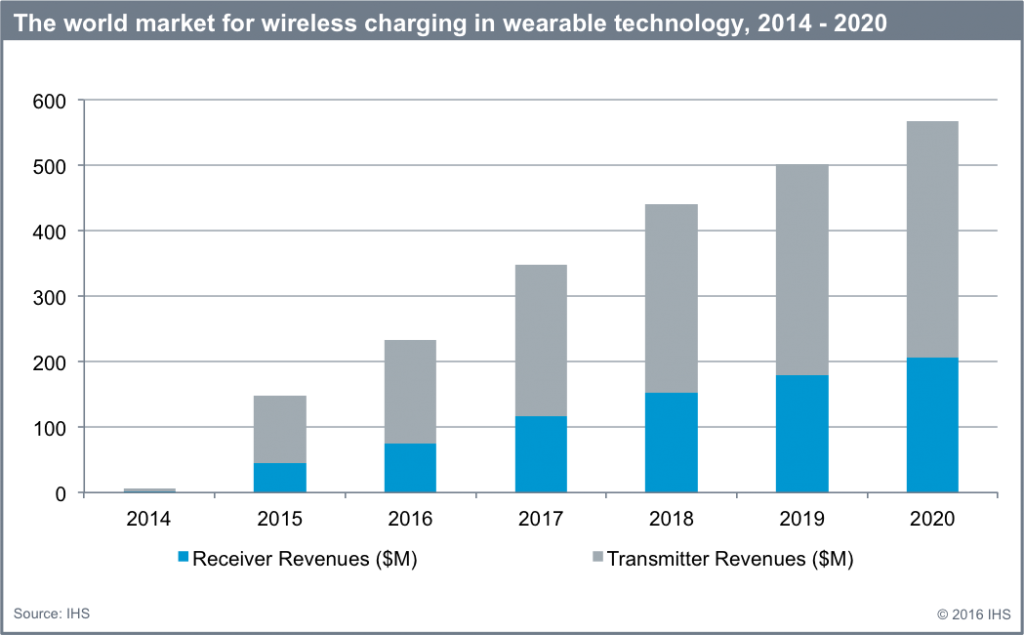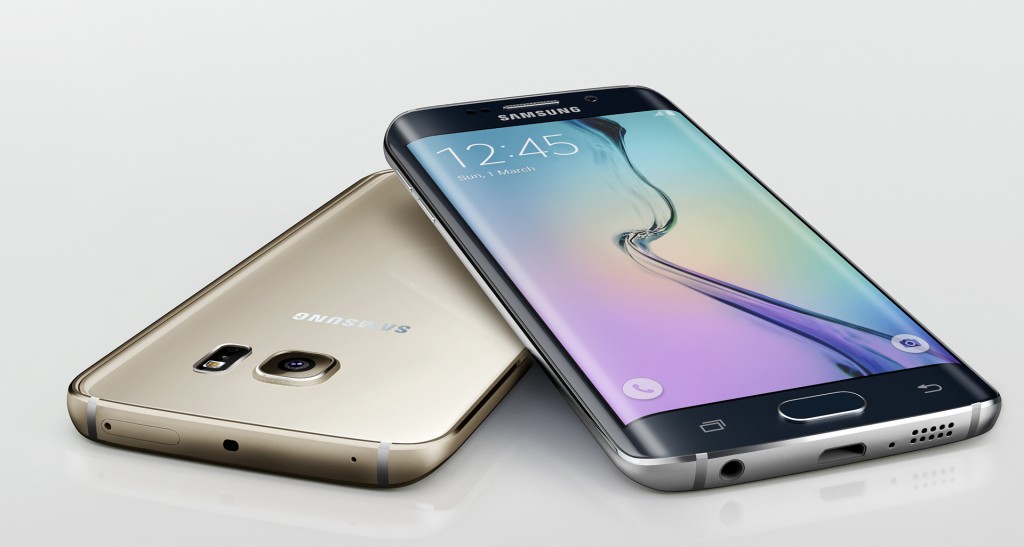Two in five wearable devices will be enabled for wireless charging by 2020, IHS says
Wireless-charging-enabled wearable devices have already been introduced by high-profile volume manufacturers, and the potential for growth is immense
The wearable technology market continues to rapidly expand, driving more than $40-billion in revenue by 2020. There were 23 million wireless-charging-enabled wearable products shipped in 2015, and by 2020 40% of all wearable devices shipped will be enabled to charge wirelessly. Smartwatches are set to be the largest contributor to the wirelessly charged wearables market, accounting for almost 40% of all wearable-device wireless-charging receivers shipped in 2020, according to IHS.
 “Smartwatches are a key driver for wireless charging adoption in the wearable market, as both the Apple Watch and the Samsung Gear S2 use inductive wireless charging technology as the only method of recharging the battery,” saysVicky Yussuff, wireless power analyst for IHS Technology.
“Smartwatches are a key driver for wireless charging adoption in the wearable market, as both the Apple Watch and the Samsung Gear S2 use inductive wireless charging technology as the only method of recharging the battery,” saysVicky Yussuff, wireless power analyst for IHS Technology.
“By 2020, Apple and Samsung are expected to account for almost half of all smartwatch shipments; significantly increasing the number of wireless charging-enabled devices available to consumers.”
As with any other application, the key appeal of integrating wireless charging into wearable devices is the improvement in convenience it offers end users; however, in contrast to mobile phones and other consumer devices, wireless charging is typically the only way to charge smartwatches and other wearables. For example, the Samsung Galaxy S6 and Samsung Galaxy S6 Edge mobile phones are both enabled for wireless charging, but they also include a micro USB cable for traditional charging. In contrast, the Samsung Gear S2 smartwatch is also enabled to charge wirelessly, but has no wired connection; it is shipped with its own dedicated wireless charging transmitter dock, which is the only way to recharge the device battery.
Wearable devices come in various form factors, which presents challenges for wireless charging, because alignment becomes more difficult and more spatial freedom is required. “Magnetic resonance technology offers greater spatial freedom than an inductive solution and thus would best support the use case for wearable technology,” Yussuff says. “Delays in the commercial release of magnetic resonance solutions have created opportunity for inductive solutions to gain widespread adoption in the short term, before magnetic resonance market share increases towards 2020.”
Some progress in uncoupled technology using radio frequency was recently demonstrated by Energous Corporation at the Consumer Electronics Show (CES). The company demonstrated power transmission using its first miniature WattUp transmitter, which accompanies a receiver chip that is specially designed to easily fit small wearable devices. Ossia also grabbed headlines at CES this year. The company demonstrated its “Cota” uncoupled wireless power platform and announced a recent investment by Molex, as Energous chases its first commercial launch of consumer-ready products.
“Overall, the early adoption of inductive technology by Apple, Samsung and some others is a step in the right direction, but there are still some challenges that need to be addressed before wireless charging technology can become mature in the market for wearable technology,” Yussuff says. “At this stage, the biggest objective for many stakeholders is to avoid negative customer experiences that could create further barriers to adoption in the future. Rising adoption and an increasing customer base will only help fuel more demand for this feature on devices — especially in an application where wireless charging can provide so many benefits.”

####
